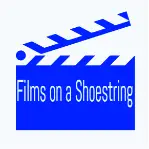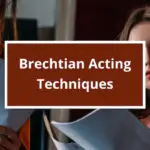The best books to learn acting allow you to develop your acting craft at home, by discovering and analysing the theories behind the greatest acting techniques.
There’s actually a lot to learn from books about auditioning, networking, the business and marketing of acting, and how famous actors got into the industry.
But this page concentrates on the best books to learn acting techniques and the theories behind them, as set out by history’s most famous acting teachers.
Constantin Stanislavski
An Actor Prepares, by Constantin Stanislavski
The Stanislavski books on his theatrical career and Stanislavski System acting technique were a huge international hit almost overnight. In fact, the Russian theatre actor, director, and world renowned acting teacher was persuaded to write them, with publishers knowing an eager audience was waiting for books to learn about acting and the world of famous actors.
The English titles of Stanislavski’s books:
- My Life in Art (1924, first published in English)
- An Actor Prepares (1936, first published in Russian)
- Building a Character (1948, first published in Russian)
- Creating a Role (1957, first published in Russian)
An Actor Prepares was the first of three books analysing the Stanislavski System, examining the inward preparation of actors. It examines Action, Magic if, Given Circumstances, Emotional memory, Imagination, Communication, Objectives, and the Super-objective.
The Stanislavski System was further investigated in Building a Character, which considers the actor’s physical realisation of the character through expressions, movement and speech on stage. Creating a Role describes the elaborate preparation needed from actors during the rehearsal period to create convincing emotion and characterisation on stage.
Michael Checkov
To the Actor: On the Technique of Acting, by Michael Checkov
One of Stanislavski’s best pupils and nephew of the famous Russian playright Anton Chekov, Michael Checkov taught his acting technique, which takes a ‘psycho-physical approach’, in Beverly Hills.
Michael Checkov’s books:
- The Path of the Actor, 1927 – the later English translation includes excerpts from his second autobiography, Life and Encounters
- To the Actor: On the Technique of Acting (1942)
- To the Actor (1953, an abridged version of the previous book)
A collection of his lectures & exercises presented in 1941 at his studio classes was posthumously published as Lessons for the Professional Actor.
Checkov’s 1955 lectures for The Stage Society were published in 1992 in the book On Theatre and the Art of Acting.
In To the Actor: On the Technique of Acting, Checkov analysed the advice of his teacher, Stanislavski, to organise his thoughts and observations, and present them to his audience, taking into account his many years of experimenting, testing and verifying in professional theatre and drama schools.
Michel Saint-Denis
Training for the Theatre: Premises and Promises, by Michel Saint-Denis
Following on from his influential career in European theatre, Michel Saint-Denis became consultant director of the drama division when the Juillard School opened, advisor to the National Theatre School of Canada, and artistic advisor when the Royal Shakespeare Company launched.
His books for actors, setting out the Michel Saint-Denis Technique:
- Theatre: The Rediscovery of Style, 1963
- Training for the Theatre: Premises and Promises, 1982
Training for the Theatre: Premises and Promises, is a practical resource for actors, directors and teachers, covering crucial areas such as understanding a play’s context, training schedules, improvisation and dealing with stage space, as well as a section on Saint-Denis’ use of masks in actor training.
Stella Adler
The Technique of Acting, by Stella Adler
One of the principles of the Stella Adler technique, named after the American actress, director and acting teacher who devised it, is an understanding of the world and other people’s experiences, augmented with imagination to experience the feelings of others.
The Technique of Acting is a handbook with insight and concrete exercises and examples taken directly from her celebrated classes in Los Angeles and New York City.
You can also discover more about the Stella Adler technique with a book called The Art of Acting, published in the year 200, in which Howard Kissel pulls together the notebooks, transcriptions and audiotapes of Adler’s work.
Lee Strasberg
In A Dream of Passion: The Development of the Method, by Lee Strasberg
Lee Strasberg’s development of the Stanislavski System led to Method Acting.
In A Dream of Passion: The Development of the Method, Lee Strasberg examined the creative process, explained what The Method was and how it worked, and revealed its development and of the people involved with it.
Strasberg at the Actors Studio: Tape Recorded Sessions by Robert Hethmon is a 1992 paperback documenting the famous teachers sessions into a useful book to learn acting.
Sanford Meisner
Sanford Meisner on Acting by Sanford Meisner
Developed from Stanislavski’s System, the Meisner Acting Technique centres the actor’s attention on living truthfully under imaginary circumstances, with the The Meisner actor focusing entirely on their stage partner as though they are real, only existing in that moment.
Sanford Meisner on Acting is a 1987 book to learn about acting with the Meisner acting technique, written in collaboration with Dennis Longwell. The book follows one of Meisner’s acting classes for fifteen months. It begins with rudimentary exercises and ends with insights into achieving highly polished scenes from contemporary American plays.
Viola Sponlin
Theatre Games for the Lone Actor, by Viola Sponlin
Viola Sponlin’s improvisational techniques and theatre games were at the heart of the Spolin Theatre Game Centre, which opened in Hollywood in 1976.
Books written by Viola Sponlin include:
- Improvisation for the Theater
- Theater Games for the Classroom: A Teacher’s Handbook
- Theater Games for the Lone Actor
- Theater Games for Rehearsal: A Director’s Handbook, Viola Spolin
- Theater Game File (1989)
Theatre Games for the Lone Actor is an ideal book to learn acting through improvisation when you need to practice on your own. More than 40 exercises help you develop the ability to enter present time and emerge in the character.
Uta Hagen
Respect for Acting by Uta Hagen
Books by Uta Hagen:
- Respect for Acting
- A Challenge for the Actor (1991)
Respect for Acting by Uta Hagen was originally published in 1973, but has seen later editions. It’s a relativey small book, but is a texbook of exercises for both new and experienced actors to learn and develop a method for connecting the character’s feelings and circumstances with their own life, with those thoughts and feelings instigating the body language to reveal the character to the audience.
If you’re lucky, you may be able to find an old DVD copy of Uta Hagen’s Acting Class – Applause Acting Series, and see a masterclass in action.
Ion Cojar
Poetics of the Actor’s Art, by Ion Cojar
Unfortunately, Ion Cojar’s Poetics of the Actor’s Art (‘O poetică a artei actorului’) does not appear to have been translated from the original Romanian publication.
Best Books to Learn Acting
This page will have shown you plenty of options when you’re searching for the best books to learn acting from legendary acting teachers. They may have been written a long while ago, and modern day books to learn acting will have a different approach, language, and tone. But if you want to know about an acting method in great detail, why not use the technique’s master themselves as your guide?






